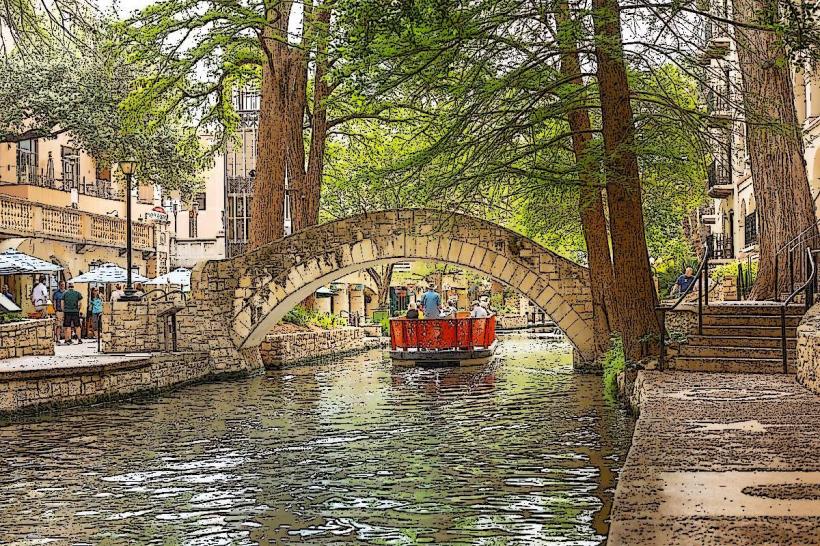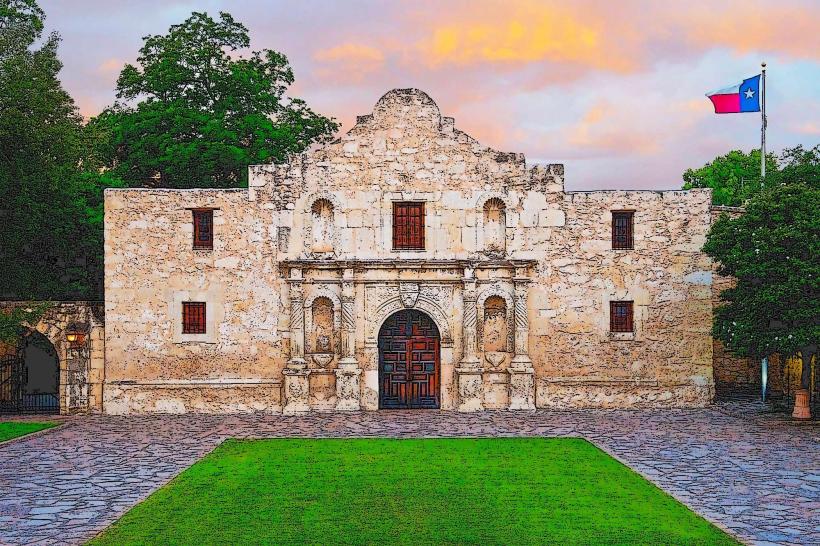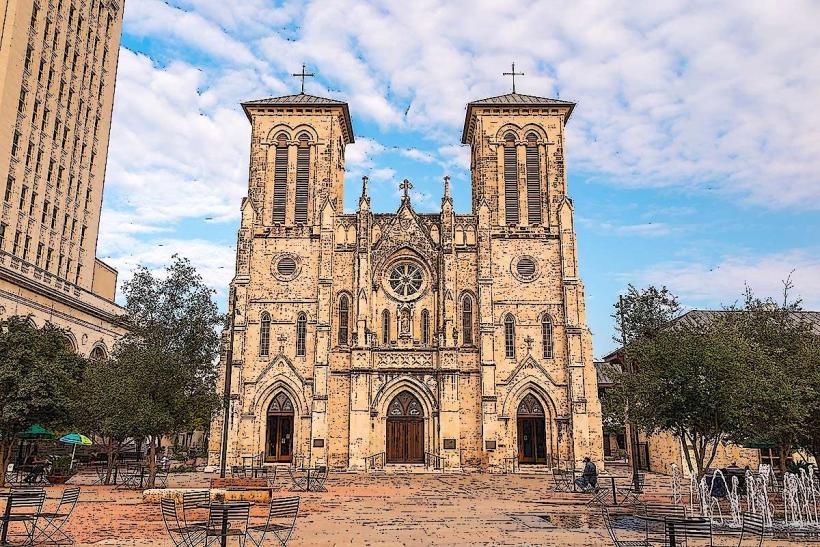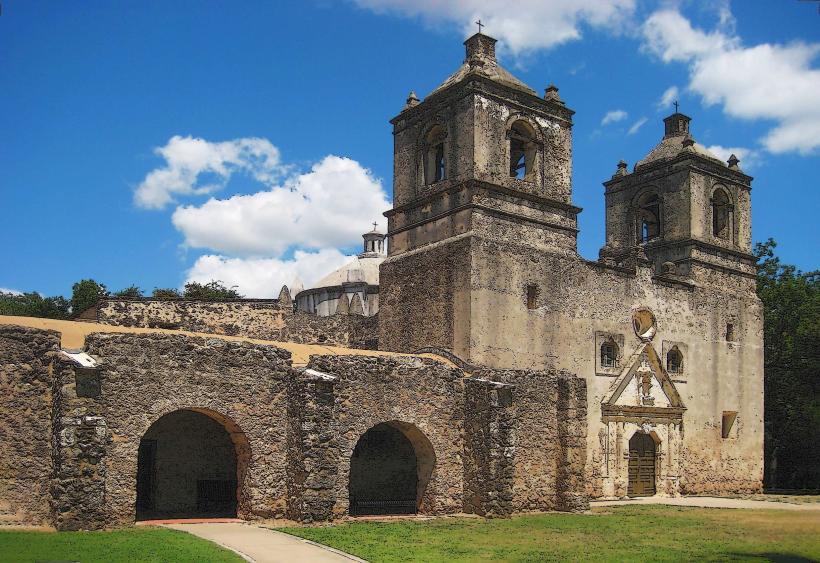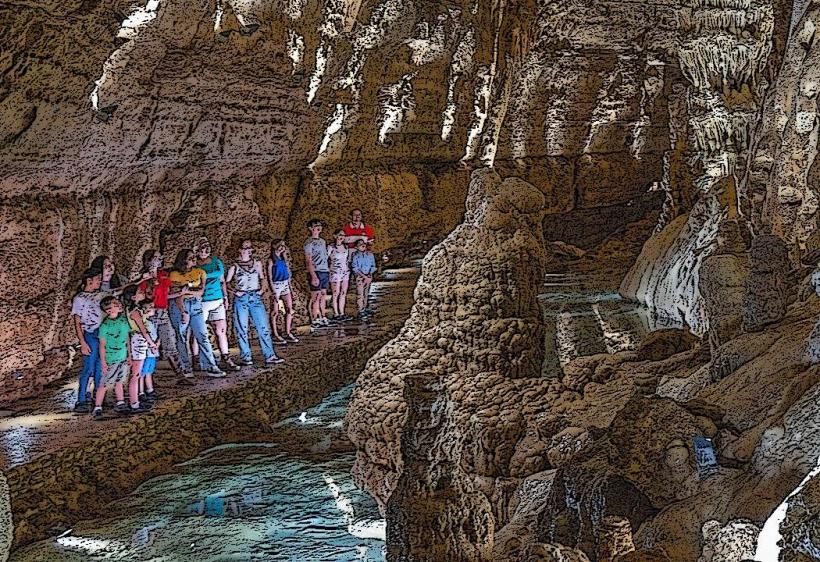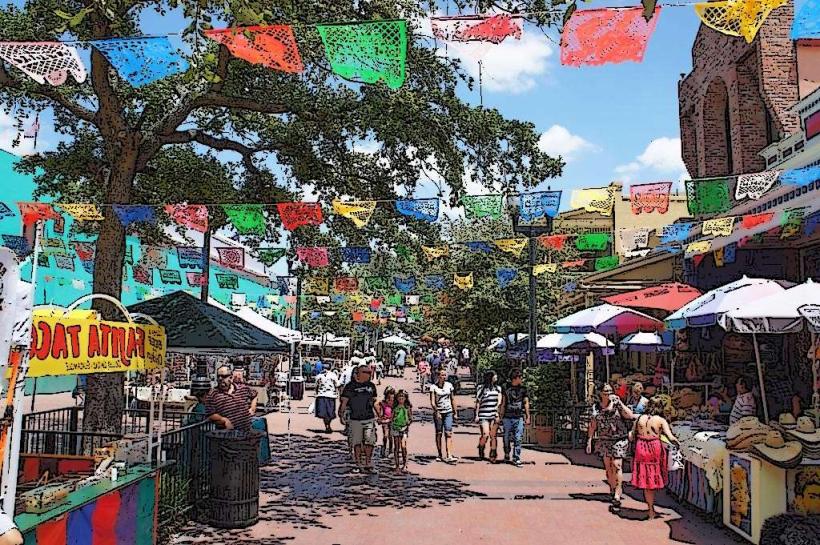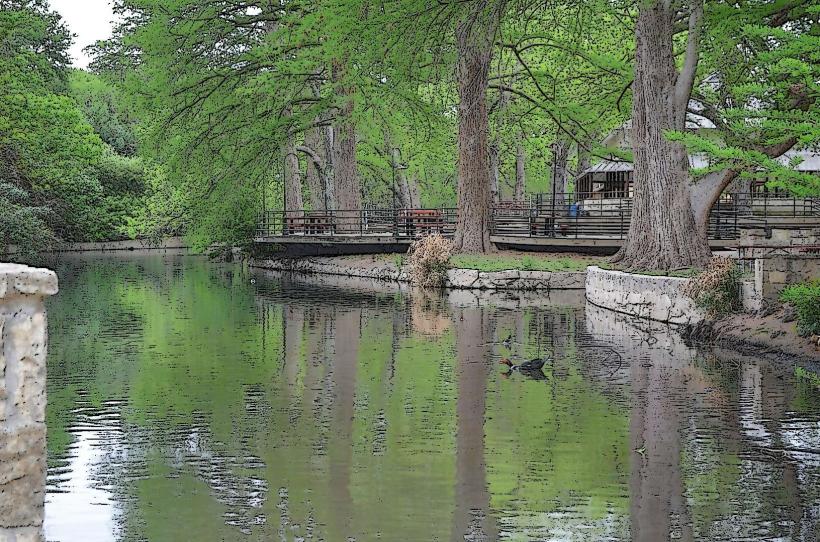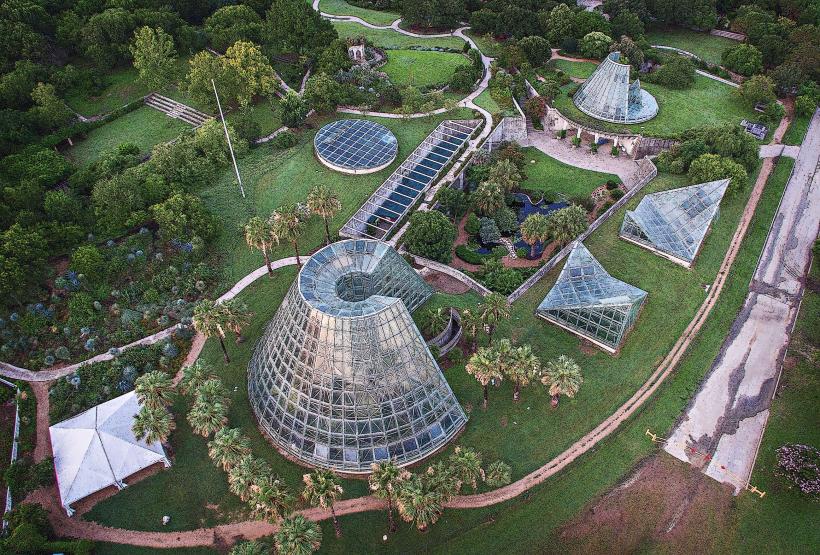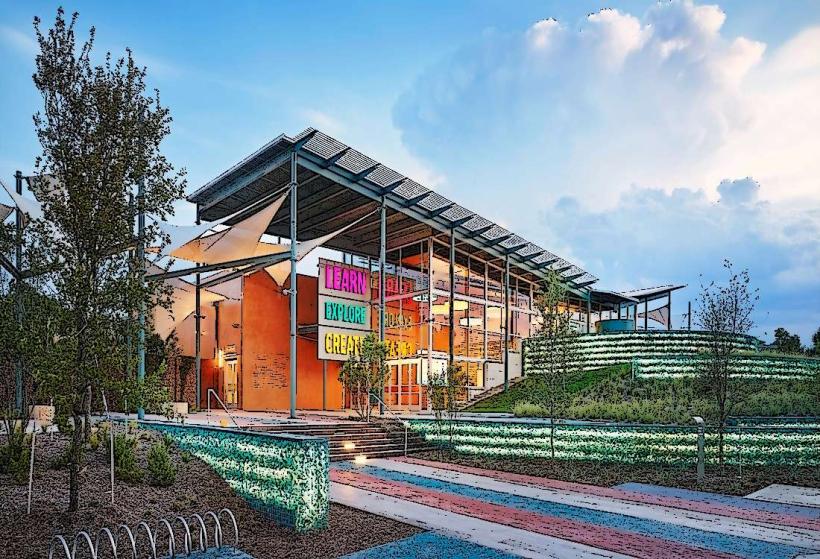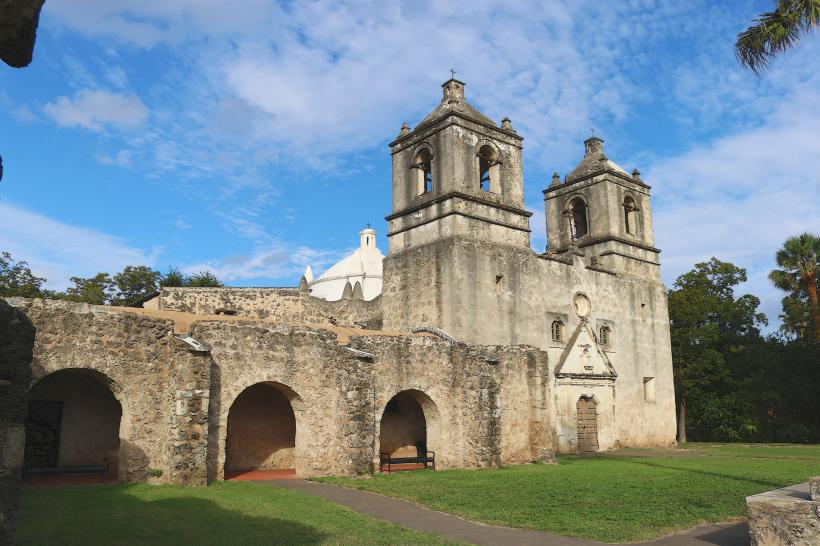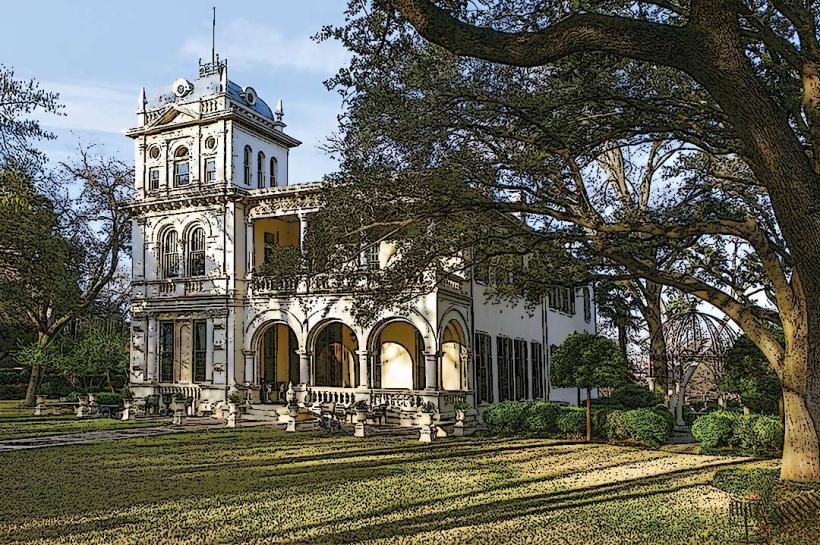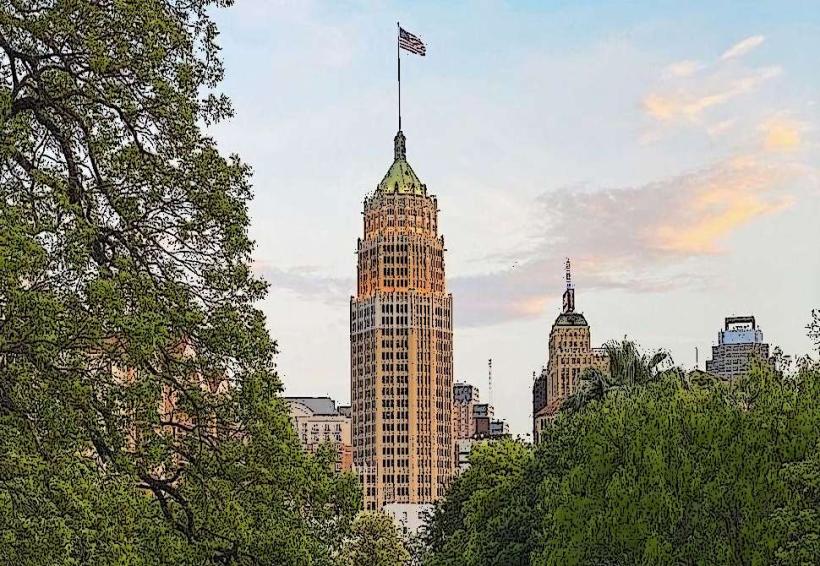Information
Landmark: Japanese Tea GardenCity: San Antonio
Country: USA Texas
Continent: North America
Japanese Tea Garden, San Antonio, USA Texas, North America
The Japanese Tea Garden in San Antonio is one of the city's most charming and tranquil spaces. Located in Brackenridge Park, the garden is a hidden gem that combines natural beauty with rich historical significance. Here’s a detailed exploration of its history, design, and what you can expect during your visit.
History and Transformation
Origins as a Quarry:
The site where the Japanese Tea Garden now sits was originally a limestone quarry. The Alamo Roman and Portland Cement Company operated the quarry from 1880 to 1908. After the quarry closed, the area remained abandoned and was left to decay.
The Vision for a Garden:
In 1915, Ray Lambert, the park commissioner at the time, began envisioning the transformation of the site into a scenic garden. The idea was to create a lily pond that could become an attractive spot for locals and tourists. This was the beginning of the garden’s creation, and in 1917, work began to convert the site into a more structured and aesthetically pleasing area.
The Role of the Jingu Family:
In 1919, the Jingu family, Japanese-American artists who had been living in the U.S., were invited to help develop the site further. The family, led by Kimi Eizo Jingu, contributed to shaping the garden’s design with traditional Japanese landscaping elements. In 1926, the Bamboo Room, a restaurant serving tea and light meals, was opened by the Jingu family, further enhancing the cultural atmosphere of the garden.
World War II and Eviction:
The garden’s success was abruptly interrupted by World War II. In 1942, anti-Japanese sentiment led to the forced eviction of the Jingu family, as many Japanese Americans were relocated to internment camps. The garden was left without its original custodians, and during the 1940s, the garden was even renamed the Chinese Tea Garden to shield it from potential vandalism and hostility.
Restoration and Renaming:
In 1984, the garden was rededicated as the Japanese Tea Garden in a special ceremony attended by members of the Jingu family, marking a symbolic return of the garden’s Japanese heritage. The city also worked to restore the garden to its former glory, with much of its original design and aesthetic preserved.
Key Features and Attractions
Water Features:
One of the garden’s standout features is its 60-foot waterfall that cascades down from the northern quarry wall. The waterfall creates a dramatic backdrop for the surrounding landscapes and is a popular spot for photos. The tranquil sound of the falling water enhances the peaceful ambiance of the garden.
Stone Pathways and Bridges:
The garden features a variety of stone walkways that wind through the lush greenery, allowing visitors to explore different sections of the garden at a leisurely pace. There are also stone arch bridges that span over koi-filled ponds, adding to the garden’s serene and picturesque environment.
Japanese-style Pagoda:
Another prominent feature is the Japanese-style pagoda, which adds an authentic touch to the garden’s overall aesthetic. The pagoda serves as a focal point, providing visitors with a place to sit and enjoy the beauty of the surroundings.
Flora:
The garden is home to a rich collection of tropical plants, with seasonal blooms adding splashes of color throughout the year. Visitors can admire a variety of flowers, plants, and trees, carefully selected to represent traditional Japanese garden design. The koi-filled ponds are an essential feature, as koi are significant in Japanese culture and symbolize luck and longevity.
The Jingu House and Dining
The Jingu House:
The Jingu House, which was once the residence of the Jingu family, has been restored and now houses a restaurant. The Jingu House serves a variety of light lunches, teas, and other refreshments, allowing visitors to enjoy a meal while overlooking the peaceful garden. This restaurant continues the tradition of serving tea and light fare that the Jingu family established when they first opened the Bamboo Room in the 1920s.
Menu:
The Jingu House offers a selection of Asian-inspired dishes with a local twist, including salads, sandwiches, and desserts. It's a great spot to relax and enjoy the surrounding beauty, especially if you're looking for a light meal after a walk through the garden.
Visiting Information
Location:
The Japanese Tea Garden is located at 3853 N. St. Mary's St., San Antonio, Texas 78212, within Brackenridge Park, near the San Antonio Zoo.
Hours:
The garden is open daily from 7:00 AM to 5:00 PM. It’s a public space, so you can visit early in the morning or later in the afternoon to enjoy the garden’s serene atmosphere.
Admission:
Admission is free, making it an accessible and affordable place to visit for both locals and tourists.
Accessibility:
The garden is wheelchair accessible in certain areas, with designated accessible parking spots. However, note that the lower garden areas are only accessible by stairs, so those with mobility challenges might need to focus on the upper sections of the garden.
Events and Activities
The Japanese Tea Garden hosts a variety of cultural events throughout the year, making it more than just a place for quiet reflection. Some of the events include:
Garden Rhythms:
A cultural event that features cocktails, music, and dance performances. It’s a great way to enjoy the beauty of the garden while experiencing local culture.
Jazz in the Garden:
A popular event where live jazz music fills the garden, providing a relaxing soundtrack to an evening in the peaceful space.
Disco Night:
A themed event that invites guests to dance the night away in the garden, offering a fun and unique way to experience the venue.
The Garden’s Cultural Legacy
The Japanese Tea Garden stands as a tribute to both the Japanese-American community and the people of San Antonio. While the site was originally the vision of a Japanese family, it has since become a symbol of cultural integration and harmony. The garden’s transformation from an industrial quarry into a place of tranquility represents the adaptability of the city and its embrace of diverse cultural influences.
With its serene ambiance, historic significance, and cultural events, the Japanese Tea Garden is a must-visit destination in San Antonio, offering visitors a peaceful retreat amidst the urban bustle. Whether you’re there for a quiet stroll, a cultural experience, or a meal at the Jingu House, the garden offers something for everyone to enjoy.

